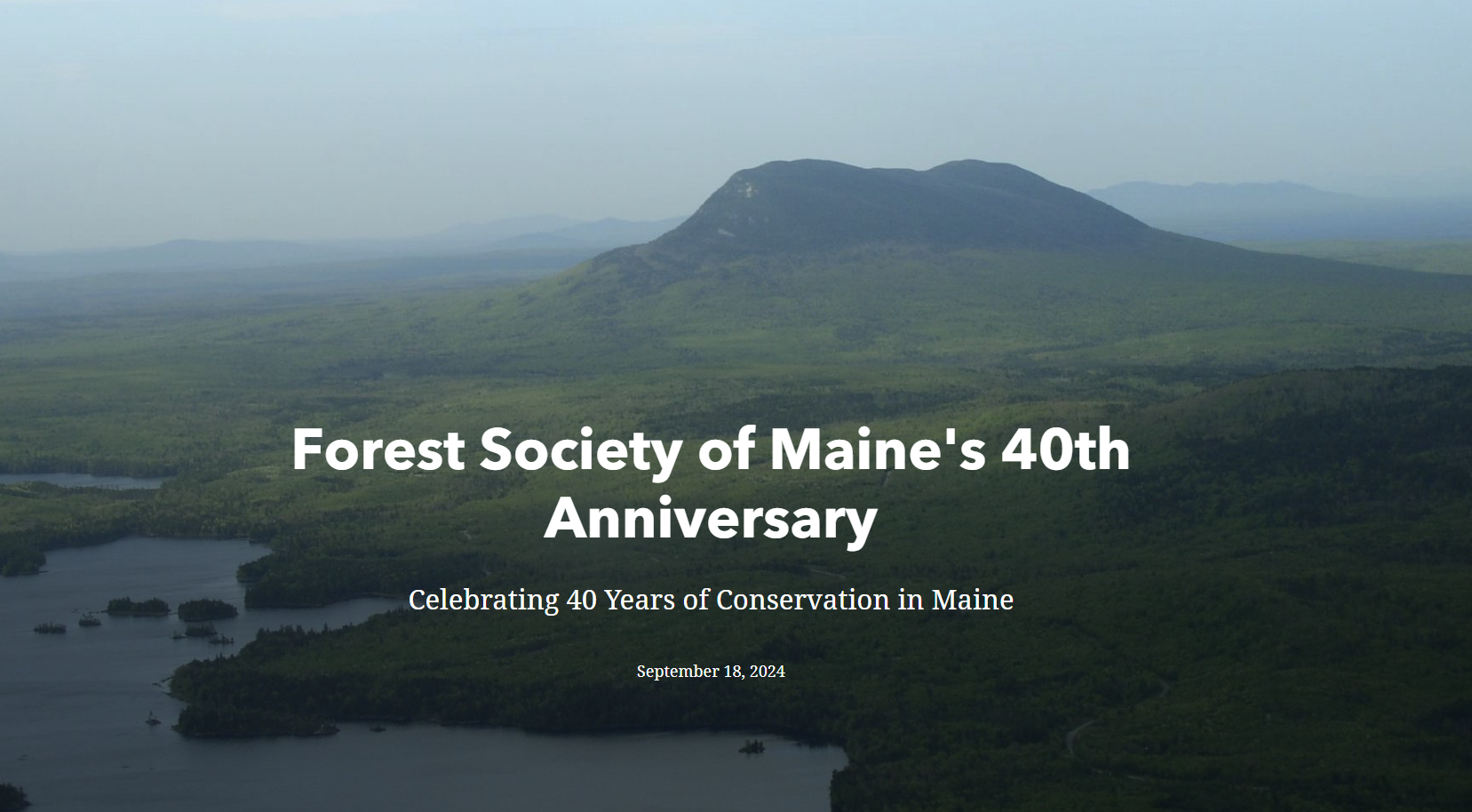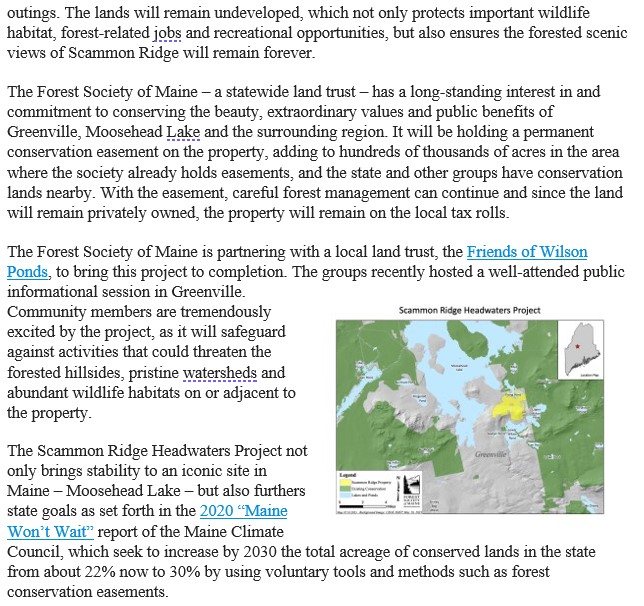
LEARN MORE DONATE CASE STATEMENT PRESS RELEASE
Four conservation organizations today announced a partnership aimed at permanently conserving 78,000 acres in the Magalloway region of western Maine. The multifaceted land conservation project will maintain existing recreational access to the property’s lands and waters, while establishing forested buffers around rivers, lakes, and streams. Core to the purpose, the project will help sustain the regional economy by continuing opportunities for active forest management on 62,500 acres, and in addition, designate an 11,200-acre wilderness preserve that will enhance forest and biological diversity within its boundaries.
The Rangeley Lakes Heritage Trust, Forest Society of Maine, Northeast Wilderness Trust, and The Nature Conservancy have come together as the Magalloway Collaborative, and they are seeking to raise $62 million to fund the project by May 2026.
Rangeley Lakes Heritage Trust Executive Director David Miller commented: “We have an incredible opportunity before us with the Magalloway project to conserve 78,000 acres and effectively connect more than 500,000 acres of conserved lands to the east and west. This effort supports our region’s climate resiliency, helps prevent the loss of biodiversity, and preserves public access. With the support of a community who loves the Rangeley Region, we can take action and protect these globally significant lands and waters for future generations. But we must act now.”
The Magalloway project’s balanced conservation approach was negotiated in partnership with Wagner Forest Management, representing Bayroot, LLC, the property owner. Most of the property (62,500 acres) will continue to be owned by Bayroot and support the regional forest and recreational economy. A new permanent conservation easement held by Forest Society of Maine will restrict future development, secure substantial forested buffers around streams and lakes, allow the lands to be managed for forest products, and continue allowing public access for hunting, fishing, boating, and other recreational and cultural uses.
Learn more by visiting magalloway.org or the documents linked above.
Photo by Jerry Monkman.











